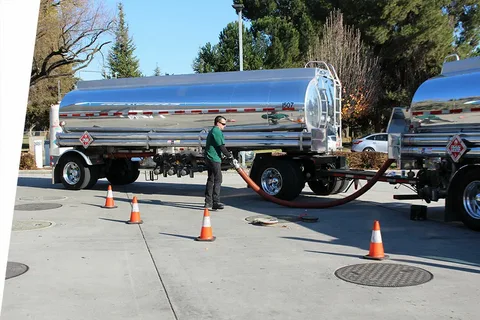Exploring the Advantages of Aluminum and Magnesium Alloys

In today’s drive toward lighter, more efficient vehicles, aluminum and magnesium alloys are taking center stage. These materials offer substantial weight reductions, improved fuel efficiency or electric-vehicle range, and design flexibility. Automakers are increasingly substituting steel and conventional materials with these lightweight metals to meet stricter emissions regulations, improve performance and enhance sustainability.
Aluminum alloys have become a mainstay in vehicle manufacturing because they offer a combination of moderate weight savings, good strength, excellent formability and established supply chains. They are commonly used for hood panels, doors, trims, chassis components and more. Magnesium alloys go even further—being lighter than aluminum, they promise even greater weight savings and are increasingly being deployed for structural parts, brackets, frames, and components where every kilogram counts.
Why These Alloys Matter
The choice of aluminum or magnesium alloys often comes down to how much weight can be saved and what trade-offs a designer is willing to make. Reducing vehicle weight brings multiple benefits: improved fuel economy or EV range, reduced emissions, better acceleration and braking performance, and even improved handling due to lower mass. For electric vehicles, shedding unsprung weight or structural mass through lightweight alloys can also mean smaller batteries and reduced cost.
Aluminum’s density is significantly lower than steel, which allows designers to maintain or even enhance strength while cutting mass. Its established manufacturing processes—casting, extruding, rolling and forging—mean it fits well within existing automotive production frameworks. Meanwhile, magnesium alloys offer the lowest density of all structural metals used in vehicles, meaning for non-critical structural parts or components where strength demands are moderate, the weight savings are considerable.
Key Advantages and Considerations
Lightweighting & performance gains: Substituting high-strength steel with aluminum can reduce component or body weight by 30-50 percent in many cases. Using magnesium takes the savings further in select applications, often achieving reductions of up to 60 percent or more relative to steel. This translates into better efficiency and improved dynamics.
Corrosion, weldability and material behaviour: Aluminum alloys are well understood, corrosion-resistant and can be joined and manufactured with relative ease. Magnesium alloys, while offering greater weight savings, present challenges: they are more prone to corrosion, less stiff, and historically more difficult to form or join, particularly in sheet form. Designs using magnesium often focus on cast or semi-structural components rather than crash-critical structures.
Cost and supply: Aluminum has mature supply chains and relatively competitive pricing. Magnesium alloys, although promising, can still carry premium cost premiums or require specialized processing—and there are fewer large-volume applications in the automotive sector as yet.
Structural vs. non-structural use: Many vehicle parts that don’t play a primary role in crash safety or load-bearing can use magnesium alloys safely—things like seat frames, steering wheel cores, brackets or covers. In contrast, aluminum tends to be used more broadly including body-in-white structures or larger panels, balancing weight savings and crash performance requirements.
Applications in the Automotive Industry
Aluminum alloys populate many vehicle segments: door skins, hood, roof panels, engine blocks, suspension arms, wheel rims and structural frames. Their versatility makes them suitable for both mainstream vehicles and premium segments.
Magnesium alloys are increasingly seen in lightweight innovations: engine cradle components, transmission housings, seat frames, steering wheel cores, and increasingly in EV battery trays or structural sub-frames where weight is critical and loads are within manageable limits.
Looking Ahead: Trends and Future Directions
As vehicle manufacturers strive for stricter emissions targets and as electric vehicles aim for greater range, the push for lightweight materials will intensify. We can expect:
-
A broader use of magnesium alloys in non-critical structural areas as processing techniques improve and cost comes down.
-
More hybrid structures combining aluminum and magnesium: for example, components where magnesium is used for the lower-load parts and aluminum or steel for the main load-carrying sections.
-
Continued innovation in alloys that improve formability, joining technology, corrosion resistance and fatigue performance—enabling broader application in body-in-white and chassis modules.
-
Greater recycling and circular-economy focus: both aluminum and magnesium are highly recyclable, and designing for reuse and end-of-life recovery will become increasingly important.
FAQs
1. Why use aluminum or magnesium alloys instead of traditional steel?
Because both aluminum and magnesium alloys offer substantially lower density, which reduces vehicle mass. Lower weight improves fuel economy, electric-vehicle range, braking and handling. Magnesium provides even greater reductions than aluminum in appropriate applications.
2. What are the main limitations or challenges of magnesium alloys?
Magnesium alloys tend to have lower stiffness, can be less formable or more difficult to weld or join compared with aluminum, and are more prone to corrosion or fatigue under certain conditions. They may also cost more or require specialized manufacturing.
3. Can aluminum and magnesium alloys be used together in the same vehicle component?
Yes—they often are. For example, a component may use a magnesium alloy for parts where weight savings are critical and loads are moderate, combined with aluminum or other materials for load-bearing sections. This hybrid material approach lets designers optimise for weight, cost and performance.
More Related Report
Automotive Regenerative Braking System Market Size


